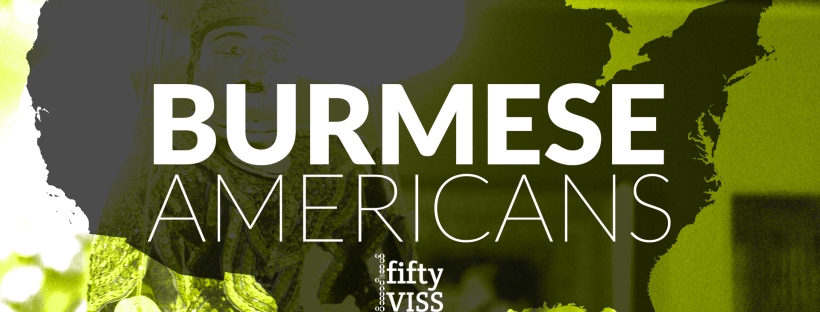Monday’s groundbreaking of a new private hospital, to be built in Downtown Rangoon–at a cost of $70 million USD–has generated visceral outcry among Burma’s medical community.
8 maps from the 2014 Burma census
During my review of the 2014 Census results, I came across a number of interesting maps that demonstrate exceeding disparities within Burma, everything from population density to electricity penetration, not readily apparent by the national “averages.”
These disparities are palpable even from bordering regions, so I did a quick runthrough against World Bank data to see where the states and regions fall among the nations of the world, to demonstrate these vast differences further. Findings below.
Postcards from colonial Burma
New York Public Library’s Digital Collections recently rolled out a number of public domain works. I was pleased to find a beautiful repository of postcards from colonial Burma by D.A. Ahuja, a Rangoon-based photographer.
Android 6.0 Marshmallow in Burmese
After 2 years on Google Nexus 5, I figured it was time for an upgrade of my well-worn phone. Shortly after Google announced its new lineup of phones in late September, I preordered a Nexus 6P, Google’s latest flagship phone, built by Huawei.
The origins of ‘laphet’
I’ve always wondered why Burmese is an outlier among many languages in the world when it comes to tea. Not simply the concept and tradition of eating tea leaves, but the Burmese word for “tea” itself. Turns out there’s an explanation.
What the mass pardon of convicted Chinese loggers says about Burma’s ‘rule of law’
On July 30, the President Thein Sein issued a presidential pardon, releasing 6,966 prisoners throughout the country. The most controversial of the pardons were of 155 Chinese nationals convicted of illegal logging in Kachin State. And the lack of political prisoners pardoned was also striking. Of the 6,966 prisoners released, only 11 were political prisoners, a paltry 0.1% of the total.
A sarcastic take on USDP campaign slogans
With the 2015 election campaign in full swing, Burmese Facebook users have spared no time in creating political memes in time for November.
The Union Solidarity and Development Party (USDP), established by the military and its close associates in the lead-up to the 2011 election, has especially been hit hard, with a barrage of criticism online by users, in the form of GIFs, image memes and other comments. There’s no doubt that the USDP suffers from a tremendous image problem, because its leadership is largely composed of the same circles that ran the former military junta. Many liken it to a revolving door.
Bringing the Burmese language up to speed
The Burmese language has a huge task at hand: modernizing itself. It’s amazing how stunted the language feels when one tries to describe business and technical jargon, making it difficult to lucidly articulate oneself in the professional realm, especially for those schooled in the West.
I, for one, work in health IT, which has specialized vocabulary that the average layman would find difficult to understand, let alone laymen speaking other languages. In the world of virtualized servers and system thin clients, I was hard pressed to explain these concepts in Burmese when I returned earlier last year, or even more generic project management concepts. Even my recent examination of Google’s Burmese Gmail translation effort reveals the usage of several unfiltered imports from English, including the word email itself.
Yesterday, I came across a newly published article, “Those Who Would Remake Myanmar Find That Words Fail Them,” which examines, if just scratching the surface, the challenges of the Burmese language in terms of its lexical capacity.
3 key governance issues facing Burma today
In March 2015, Asian Development Bank (ADB) released an excellent working paper, “Myanmar: Cross-Cutting Governance Challenges,” that provides a sweeping outline of the myriad governance plaguing the country’s path toward economic development.
Food for thought: depolicitizing ethnicity in Burma
Robert H. Taylor, a prominent Burma studies scholar, has penned an excellent article on the emotive ethnic-based political troubles that Burma is currently mired in. I’ve written before about the man-made construct of ‘race,’ and the transformation of regional affiliations to ethnic-based ones during the colonial period.
Pull the puppet strings: Muslim-Buddhist violence in Mandalay
I finally got to reading an excellent report out by the Justice Trust, entitled Hidden Hands Behind Communal Violence in Myanmar: Case Study of the Mandalay Riots. It presents a compelling analysis as to the origins of the riot violence that gripped Mandalay in July 2014, affecting both Muslim and Buddhist communities.
eGov in action: How to verify voter registration online
A few weeks ago, the Union Election Commission launched a website (checkvoterlist.uecmyanmar.org) for Burmese voters to confirm whether they’re actually registered on their wards’ voter rolls, without having to visit the UEC ward offices.
Crowdsourcing Burmese translations for Khan Academy videos
Khan Academy is an awesome online service, offering educational videos in virtually every major subject, from math and science to economics and finance. More importantly, it’s free, meaning this resource could possibly be leveraged throughout the developing world. Video content has already been translated into nearly 3 dozen languages.
Growing web presence for Burma’s state and local governments
The e-Gov fever has officially hit Burma’s regional governments. Continue reading
The Burmese American community in numbers
The size of the Burmese American community has given it greater clout in recent years. Because of its growing numbers, since the 2010 Census, “Burmese” has been separately measured as an ethnicity. So it was quite exciting for me to get in and dissect a wealth of data on what the Burmese American community looks like, in terms of income, age, education, and poverty.
Continue reading









